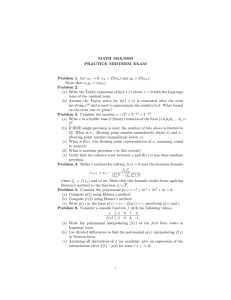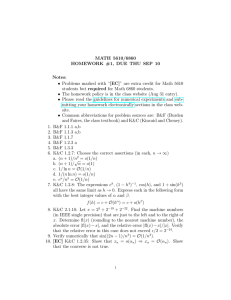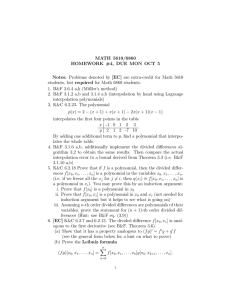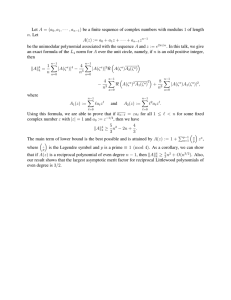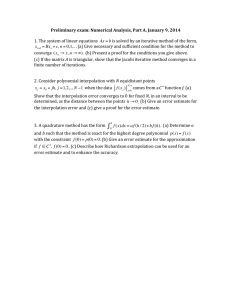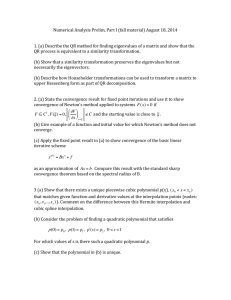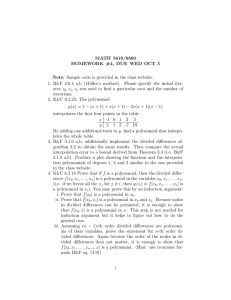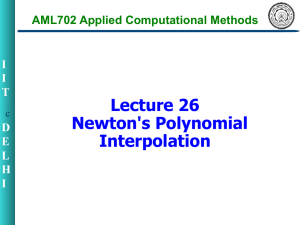MATH 5610/6860 PRACTICE FINAL EXAM
advertisement
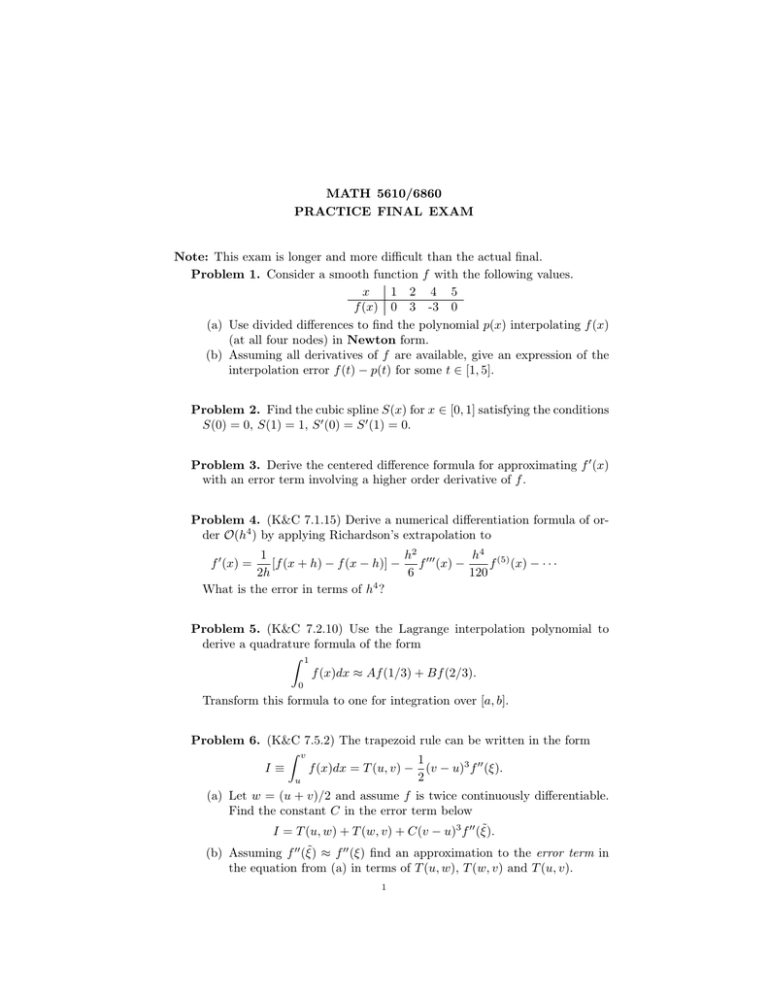
MATH 5610/6860 PRACTICE FINAL EXAM Note: This exam is longer and more difficult than the actual final. Problem 1. Consider a smooth function f with the following values. x 1 2 4 5 f (x) 0 3 -3 0 (a) Use divided differences to find the polynomial p(x) interpolating f (x) (at all four nodes) in Newton form. (b) Assuming all derivatives of f are available, give an expression of the interpolation error f (t) − p(t) for some t ∈ [1, 5]. Problem 2. Find the cubic spline S(x) for x ∈ [0, 1] satisfying the conditions S(0) = 0, S(1) = 1, S 0 (0) = S 0 (1) = 0. Problem 3. Derive the centered difference formula for approximating f 0 (x) with an error term involving a higher order derivative of f . Problem 4. (K&C 7.1.15) Derive a numerical differentiation formula of order O(h4 ) by applying Richardson’s extrapolation to h2 h4 (5) 1 [f (x + h) − f (x − h)] − f 000 (x) − f (x) − · · · 2h 6 120 What is the error in terms of h4 ? f 0 (x) = Problem 5. (K&C 7.2.10) Use the Lagrange interpolation polynomial to derive a quadrature formula of the form Z 1 f (x)dx ≈ Af (1/3) + Bf (2/3). 0 Transform this formula to one for integration over [a, b]. Problem 6. (K&C 7.5.2) The trapezoid rule can be written in the form Z v 1 I≡ f (x)dx = T (u, v) − (v − u)3 f 00 (ξ). 2 u (a) Let w = (u + v)/2 and assume f is twice continuously differentiable. Find the constant C in the error term below ˜ I = T (u, w) + T (w, v) + C(v − u)3 f 00 (ξ). ˜ ≈ f 00 (ξ) find an approximation to the error term in (b) Assuming f 00 (ξ) the equation from (a) in terms of T (u, w), T (w, v) and T (u, v). 1 2 MATH 5610/6860 PRACTICE FINAL EXAM Problem 7. Find the LU factorization (with L being a unit lower triangular matrix) of the matrix 1 1 2 A = 1 2 1 1 1 1 Problem 8. The first five Legendre polynomials (monic and orthogonal on [-1,1]) are: p0 (x) = 1 p1 (x) = x 2 3 3 3 p3 (x) = x − x 5 6 2 3 4 p4 (x) = x − x + 7 35 Find p4 using p0 , · · · , p3 . p2 (x) = x2 − Problem 9. Find the polynomial of the form p(x) = a + bx that best approximates f (x) = x3 in [0, 1], where the norm is induced by the product Z 1 (f, g) = f (x)g(x)dx. 0 Problem 10. Let xj = 2πj/N and Ej (x) = exp[2iπjx/N ], j = 0, . . . , N − 1. Recall the pseudo-inner product (f, g)N N −1 1 X = f (xj )g(xj ), N j=0 and its fundamental property ( 1 if n − m is divisible by N (En , Em ) = 0 otherwise. Consider the trigonometric polynomial p= N −1 X ck Ek . k=0 Show the discrete Parseval’s identity N −1 X |p(xj )|2 = N j=0 Hint: For j = 0, . . . , N − 1 we have, ! N −1 X 2 |p(xj )| = ck Ek (xj ) k=0 N −1 X |ck |2 . j=0 N −1 X k0 =0 ! ck0 E k0 (xj ) .



